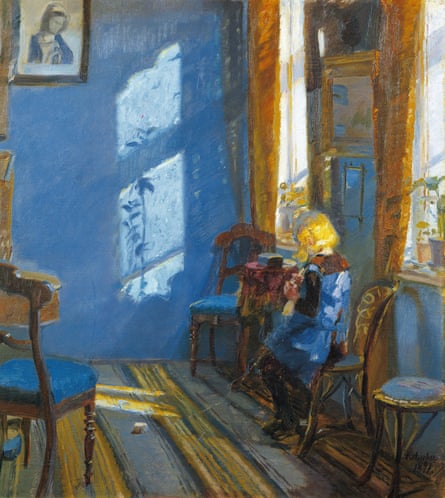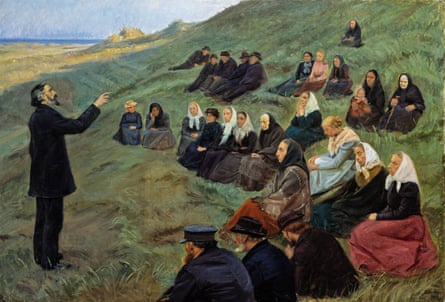Walking into the Anna Ancher exhibition at Dulwich Picture Gallery feels like walking into a pat of butter, or, perhaps, more aptly, a ray of sunlight. The luscious pale yellow walls of the first two galleries immediately immerse you in what Ancher is most known for: her remarkably radical practice of painting light.
Ancher was born Anna Brøndum in 1859 and raised in Skagen, a wild region at the northern tip of Denmark known for its windswept beaches, ethereal light and wild seas. The area became a destination for artists in the late 19th century, one of whom, Michael Ancher, became Anna’s husband. Her exposure to working artists from her early teenage years put her on the path to becoming an artist herself, something that her parents and future husband both, unusually, unequivocally supported. She became part of what was eventually known as the Skagen Painters; as the only member who was actually from Skagen, her work had a depth of connection to place unmatched by her peers.

Rather than being a rehabilitation of a “forgotten” woman artist, this exhibition is a long overdue introduction to British audiences of one of the most famous artists in Denmark to this day. Ancher was never lost to art history the way that many 19th-century women were, but her international reputation (and that of her peers in the Skagen Group) has never been as great as she deserves. Part of the “modern breakthrough” movement in Scandinavian art, Ancher and her friends strove to paint what they termed the truth, shedding the confines of the academic tradition – which was still inaccessible to women in Denmark, in any case.
She spent time in Paris in the 1880s, where she and her husband were exposed to the work of the impressionists, which greatly influenced her own approach to painting. But her work is unique in its particular devotion to the tones of light that flooded her very northern home, from pale butter to rich gold and bloody rose. Her assured, smooth brushstrokes trace her gestures across each canvas, with textured, layered impasto marks building up a tactile, staccato pattern of light crossing a room. Most of her works depict her home or that of other members of the Skagen community. In revisiting the same spaces again and again, she was able to experiment with form and material, particularly through depicting the repetitive pattern of light coming through window panes.
Some of the most moving works here are Ancher’s paintings of her mother, Ane Møller Brøndum, a paradoxical figure who was both part of a conservative Christian sect and also deeply supportive of her daughter’s determination to pursue an artistic career. In one, her shawl-swathed figure dissolves into abstracted tones of red and eventually into raw canvas. In another, she leans over the coffin of her daughter Agnes, drenched in shadow while Agnes is almost completely washed out in white, two chromatic poles in a portrait of grief. And finally, she lies on her own deathbed, painted with such profound tenderness by the daughter who had cared for, and been cared for by her, all her life.

The exhibition makes clear just how dependent Ancher’s success was on her vast support system. Her parents, extended family, husband and network of friends encouraged her, helped with childcare for her daughter Helga, and generally did not blink at her refusal to follow many of her female peers in giving up painting to focus on the roles of wife and mother.
The rather small, narrow galleries that form the temporary exhibition space at Dulwich Picture Gallery lend themselves well to work like Ancher’s, which is relatively small-scale and intimate. Her paintings hit a sweet spot of being both radical but legible, crowd-pleasing but novel, foreign but familiar.
Leaving the exhibition, one wonders how one had avoided her work for so long. It is extraordinarily beautiful, propelling viewers to look more closely both at the paintings in front of them and at their own everyday spaces. Perhaps we could all find as much to see as Anna Ancher did.

 4 hours ago
8
4 hours ago
8

















































